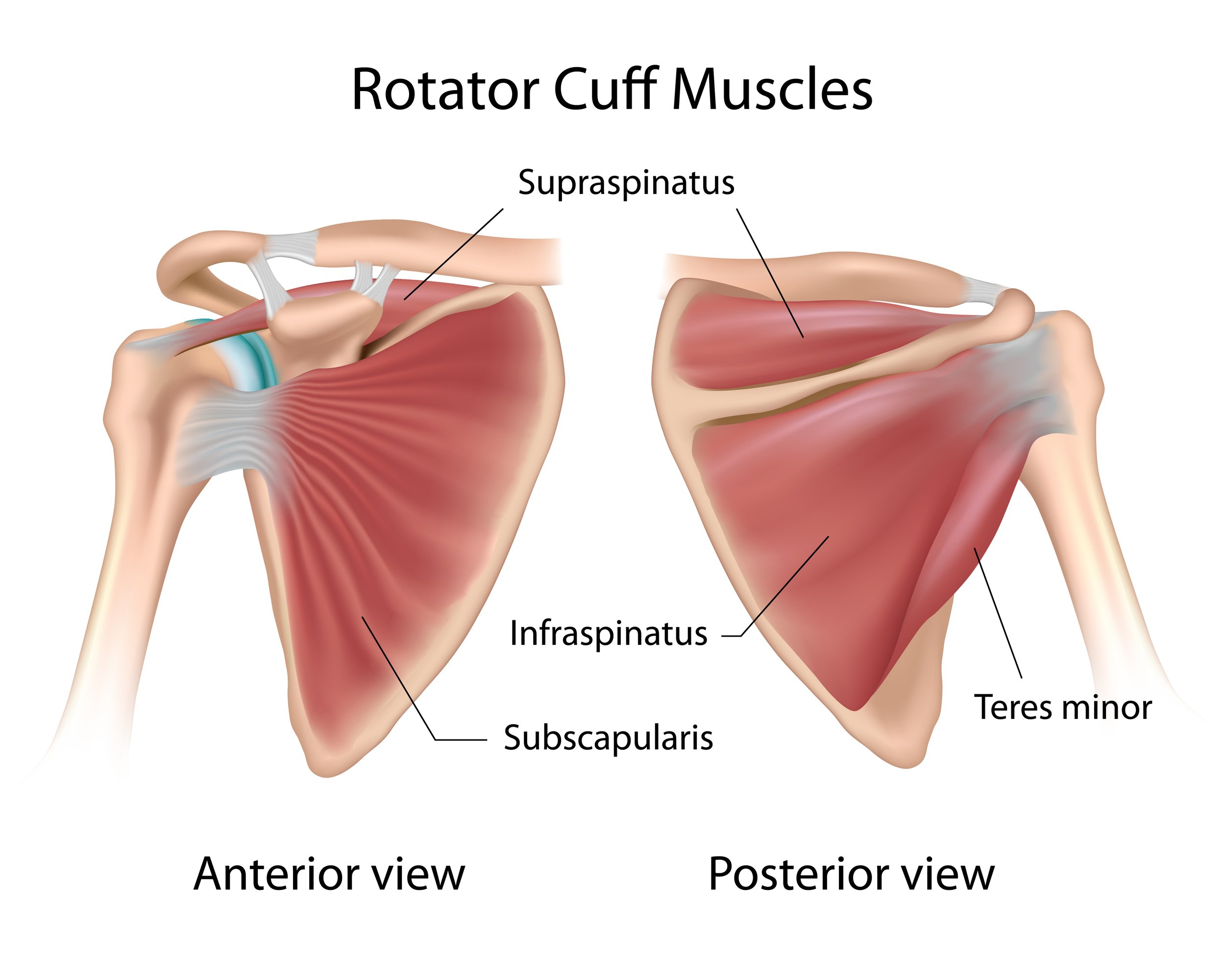the rotator cuff for dummies
By Manisha Wijayanayagam, Physiotherapy Resident
Have you ever injured your shoulder and had a someone tell you that you probably hurt your rotator cuff? If you agreed but then proceeded to wonder what a rotator cuff is, look no further because we’re going to fill you in!
The rotator cuff is a general term that encompasses 4 small muscles around the shoulder joint: the infraspinatus, supraspinatus, subscapularis, and teres minor (see above image). The function of these muscles is just as impressive as their names. If you’re a Marvel fan, you can think of them like the “Avengers” of the shoulder, whereby their coordinated and combined actions provide protection, stability, and support to the shoulder joint. The shoulder joint itself is designed to allow a lot of mobility so you’re able to do things like reach for your kids snacks in the back seat or swing a racquet, bat, or club. However, all of this mobility comes at the sacrifice of stability.
The shoulder joint is classified as a ball and socket joint but is better described like a golf ball sitting on a tee, which you can imagine is not very supportive and leaves the shoulder vulnerable. This is why the protective role of the rotator cuff is so important. These muscles work together to keep the golf ball from slipping off the tee as the shoulder is moving. They originate from various parts of the scapula (shoulder blade bone) and their tendons converge to attach onto the top of the humerus (arm bone) to form a strong covering or “cuff” over the joint, keeping the golf ball snug to the tee. The rotator cuff works in collaboration with a whole lot of other muscles that allow the shoulder to push, pull, lift, press, throw, etc. and create a very mobile joint with many actions.
Manisha Wijay, Physiotherapy Resident and Pelvic Health Provider
Manisha completed her Master of Physical Therapy at the University for Toronto. Prior to this, she graduated from the University of Guelph with a Bachelor of Science with Honours in Bio-medical Science. Manisha stays active throughout daily life by running, lifting weights and when the weather permits, playing tennis and hiking!



